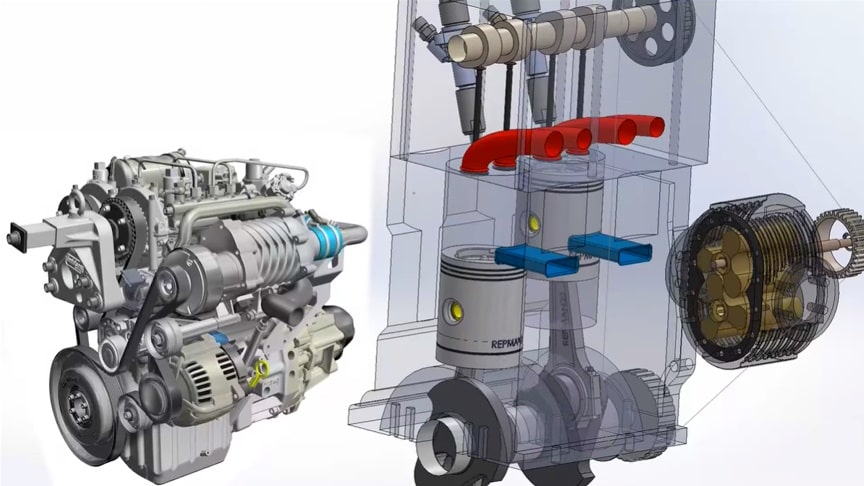A two-stroke diesel engine is a diesel engine that uses compression ignition in a two-stroke combustion cycle. It was invented by Hugo Güldner in 1899.In compression ignition, air is first compressed and heated; fuel is then injected into the cylinder, causing it to self-ignite.
source.image: Repairman22
This delivers a power stroke each time the piston rises and falls, without any need for the additional exhaust and induction strokes of the four-stroke cycle.The defining characteristic of the diesel engine is that it relies on compression ignition. As air is compressed it heats up. Fuel is then injected into the hot, compressed air and ignites spontaneously.
This allows it to operate with a lean mixture comprising mainly air. Together with the high compression ratio, this makes it more economical than the petrol or gasoline Otto engine.In the two-stroke cycle, the four stages of internal combustion engine operation (intake, compression, ignition, exhaust) occur in one 360° revolution of the crank shaft, whereas in a four-stroke engine they take two complete revolutions.
Advertisement
Consequently, in the two-stroke cycle the stages overlap through most of the engine’s operation. This makes its thermodynamic and aerodynamic processes more complex. Because the four-stroke cylinder fires only every other revolution, the power output of the two-stroke cycle is theoretically twice as much.











